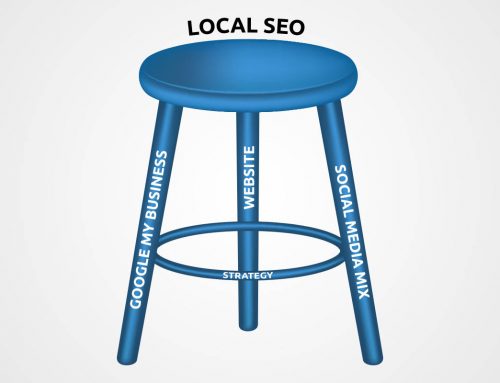Rules of Attraction
Nothing’s worse than saying all the right things to get someone’s attention, only to have them finally meet you and be grossly disappointed by your appearance or turned away when they can’t understand you. With marketing, attracting consumers or clients online won’t serve your business any good if you aren’t able to follow through in meeting the expectations of a broad base of potential visitors from the point of finding your ads, search results, on through to purchasing from you or contacting you. Unfortunately, far too many businesses have picked up some bad habits which are quick to lose visitor interests or make for a more difficult user experience than necessary.
Because of advances in technology, consumer behaviors have shifted to where judgement is passed even more quickly on whether to click through to or make a purchase on a website. These judgments can be about as quick and arbitrary as what you might find at a speed dating event. There, you have a wide range of competitors. Each offering the same thing, but with varying degrees of ability in showcasing their own date-worthiness. In such scenarios, there are a couple key aspects being judged: Appearance and Articulation. These are also pretty significant elements in website design that can continue attracting visitors or turn them away.
Appearances
Let’s break appearance down into a few segments: Modern/Current Design standards, Imagery, and Branding/Colors.
Modern/Current Design
Absolutely, styles in appearances evolve. Advancements in technology, such as responsive design, are going to have significant influences in website design. For about 5 years, businesses were spoiled when it came to the world of design online. We had exciting things like FLASH bringing life to websites and programmers could literally take any graphic masterpiece and turn it into a website… But, what was lost was the basic understanding in differences between purpose in design and what could be done in design. The edgy designs aimed to be so unique, user experience was sacrificed, making it difficult for visitors to navigate the website. As access to the world wide web increased, behaviors of people visiting websites started normalizing, producing not just user trends, but standards. Only significant changes to technology seem to have forced standards to evolve, while trends (like FLASH) have come and gone.
Just take these two sites below as examples between a design that hasn’t evolved to keep with the standards and one that is keeping up.
This law firm (the name of which has been removed from the images to keep me from being subject to any possible legal backlash), doesn’t have FLASH, but certainly breaks several rules in modern website design standards. It breaks several other design rules as well, but we’ll stick to those pertaining to online for now. (Feel free to click on the image to see it larger).
Imagery
Branding/Colors
Videos
While the attorney’s videos were decent, all of them pulled people away from the website to view them. Always use YouTube or Vimeo embedded video players in order to keep visitors on your website! The last thing you want to do is have them go to YouTube and end up viewing videos from your competition.
Compare to this website design.

Articulation
Whether at a speed dating function or a visitor coming to a website, you have the same question in your mind: “So, what?!” If the person in the other chair, or the website you are visiting can’t answer that question in the short time they have, there’s little chance you’ll give them another chance. “So, what?!” is the question begging for a value proposition to be presented before the visitor. These value propositions need to be tied closely to a call to action.
Far too many businesses confuse being articulate with telling potential clients/customers everything they need to know. The latter of these approaches could easily overwhelm a visitor, resulting in a high bounce rate. Articulation, is giving the consumer the least amount of information they need in order to make a decision between competitors. The home page, especially, needs to be concise and focused on primary priorities. On each subsequent page, the primary points should be above the fold, as well, with calls-to-action leading the visitor to the end goal of buying, calling, or completing a form.
With PPC and organic search result content, your description needs to quickly entice a searcher to choose your website over all others. When they get to the website, they need to be reminded why they clicked on the add and given an even stronger reason to “buy” as opposed to bounce. Too much effort goes into getting a visitor to come to a website to not be certain to review where it’s at in terms of viability in a modern online market. It might just be worth the time and effort to find out what it will take to improve on any of these areas you find your company’s website to be lacking in.








